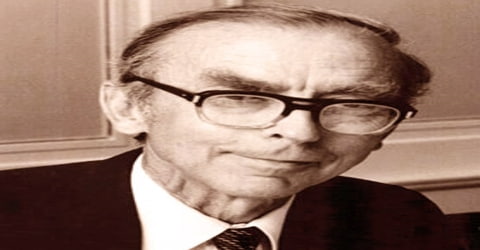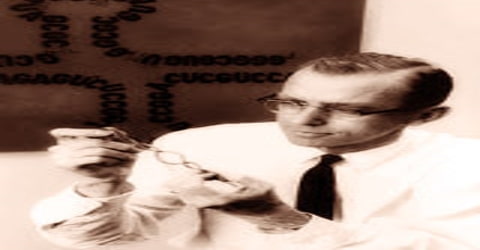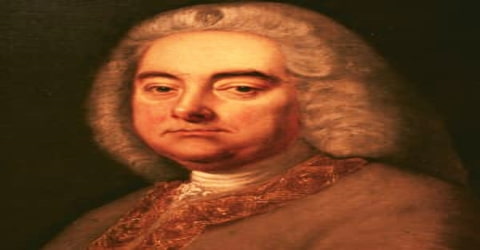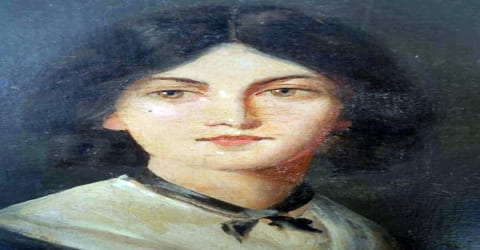Biography of Robert William Holley
Robert William Holley – American biochemist.
Name: Robert William Holley
Date of Birth: January 28, 1922
Place of Birth: Urbana, Illinois, United States
Date of Death: February 11, 1993 (aged 71)
Place of Death: Los Gatos, California, United States
Occupation: Biochemists
Father: Charles Holley
Mother: Voila Holley
Spouse/Ex: Ann Lenore Dworkin Holley (m. 1945-1993)
Children: Frederick
Early Life

An American biochemist who shared the Nobel Prize in Physiology or Medicine in 1968 with Marshall Warren Nirenberg and Har Gobind Khorana, Robert William Holley was born on January 28, 1922, in Urbana, Illinois, U.S. He was one of the four sons of Charles and Viola Holley, both educators.
Holley started his career as a postdoctoral fellow at Washington State University. During this time, he spent much of his research time on the characterization of the metabolic transformations of 2,4-dichlorophenoxyacetic acid. The work greatly differed from his subsequent work in the coming decades. Following a number of academic positions at various scientific institutions and universities, Holley finally moved to Cornell University where he indulged in the isolation, sequencing and deterring of the structure of the RNA, a work that earned him much praise, accolades and also the prestigious Nobel Prize award.
Childhood, Family and Educational Life

Robert W. Holley, in full Robert William Holley, was born on January 28, 1922, in Urbana, Illinois to Charles and Voila Holley. He was one of the four sons born to the couple. His parents were educationists by profession.
Holley graduated from Urbana High School in 1938, studied chemistry at the University of Illinois, and received his BA degree in 1942. He studied for his Ph.D. in organic chemistry at Cornell University with Professor Alfred T. Blomquist from 1942 to 1947. His graduate work was interrupted for two years during the war (1944-1946) when he participated with Professor Vincent du Vigneaud at Cornell University Medical College in the first chemical synthesis of penicillin. In 1947, Holley completed his Ph.D. studies.
Following his graduate studies, Holley remained associated with Cornell. He became an Assistant Professor of organic chemistry in 1948 and was appointed as Professor of Biochemistry in 1962. He began his research on RNA after spending a year’s sabbatical (1955-1956) studying with James F. Bonner at the California Institute of Technology.
Personal Life
Robert William Holley married Ann Dworkin in 1945. Ann worked as a teacher of mathematics. The couple was blessed with a son Frederick.
Career and Works

Immediately after completing his Ph.D. degree, Robert William Holley spent a year as an American Chemical Society Postdoctoral Fellow with Professor Carl M. Stevens at Washington State University. During his time at the Washington State University, he worked on the characterization of the metabolic transformations of 2,4-dichlorophenoxyacetic acid in bean plants, and identification of the plant hormones, auxins. From his work on penicillin, he established a correlation between the chemical reactivity of amides and their spatial structures.
After two years spent as an American Chemical Society Postdoctoral Fellow at Washington State University, he returned as an assistant professor of organic chemistry to the Geneva Experiment Station of Cornell University. He was an associate professor there from 1950 to 1957.
Holley investigated a variety of biochemical questions at the state and federal agricultural experiment stations at Cornell (1948-64). He began his research on RNA after spending a year studying with James F. Bonner at the California Institute of Technology (1955-56).
For a year from 1955 to 1956, Holley served as a Guggenheim Memorial Fellow in the Division of Biology at the California Institute of Technology. Holley discovered the world of RNA and protein synthesis during this sabbatical. Meanwhile, at the Massachusetts General Hospital, the characterization of the mechanisms of protein synthesis in the in vitro protein synthesis systems had been made obvious. Subsequently, what followed was the attachment of amino acids to RNAs. However, these RNAs were not the ones playing a role in protein synthesis but those that were present in another of the subcellular fractions used for the in vitro synthesis system.
Holley’s research on RNA focused first on isolating transfer RNA (tRNA), and later on determining the sequence and structure of alanine tRNA, the molecule that incorporates the amino acid alanine into proteins. Holley’s team of researchers determined the tRNA’s structure by using two ribonucleases to split the tRNA molecule into pieces. Each enzyme split the molecule at location points for specific nucleotides. By a process of “puzzling out” the structure of the pieces split by the two different enzymes, then comparing the pieces from both enzymes splits, the team eventually determined the entire structure of the molecule.
The work on RNA was made more difficult by the fact that there are only four different nucleotides, compared with twenty amino acids, and this created a lot of ambiguities in the relative positioning of the different fragments. Another unexpected difficulty was the existence of bases with a modified structure and unusual properties, such as the lack of absorption of ultra-violet light, the structure of which had to be characterized. These modifications occur after the synthesis of the tRNA from DNA, at a posttranscriptional stage.
By 1960 Holley and others had shown that small molecules of ribonucleic acids, called transfer RNAs, were involved in the assembly of amino acids into proteins. Holley and his collaborators developed techniques to separate the different transfer RNAs from the mixture in the cell.
In 1962, Holley received the position of Professor of Biochemistry at the Cornell University. Two years later, he became a full-time Professor of Biochemistry and Molecular Biology at the University. He also served as the Chairman of the Department of Biochemistry for a year from 1965 to 1966.
Holley used two different nucleases, pancreatic ribonuclease, and takadiastase ribonuclease T1, recently characterized by a Japanese group, which cut at different positions in the sequence and separated the fragments by chromatography on DEAE-cellulose, a recently designed ion-exchange chromatographic technique which Holley adapted to his purpose. It was not sufficient to determine the full sequence, and a lot of additional tricks had to be used to complete it: progressive degradation of the fragments by an exonuclease, snake venom phosphodiesterase, starting at one extremity of these fragments; a limited and preferential cutting of the tRNA molecule into two fragments obtained by working at low temperature; use of the different characteristics of the two extremities of the tRNA molecule and of the modified bases as markers of unique positions, and so forth. With the help of “platoons” of graduate students, the full sequence was described in 1965. The position of the anticodon, the site of interaction, by base-pairing, with the messenger RNA, and a model for the secondary structure of the molecule were simultaneously proposed.
In 1964, the structure was completed and marked a major discovery in explaining the synthesis of proteins from messenger RNA. It also became the first nucleotide sequence of ribonucleic acid to be determined. Over the next two years, more than half-dozen structures of tRNA were determined. Holley was awarded the Nobel Prize in Physiology or Medicine in 1968 for this discovery, and Har Gobind Khorana and Marshall W. Nirenberg were also awarded the prize that year for contributions to the understanding of protein synthesis. In 1966, Holley moved to Salk Institute for Biological Studies and the Scripps Clinic and Research Foundation in La Jolla, California, as a National Science Foundation Postdoctoral Fellow. He served as a Fellow until 1967.
In 1968, there were still many questions pending in the field of protein synthesis: the precise three-dimensional structure of tRNAs and ribosomes was ignored, and the different steps in protein synthesis were still fuzzy. Holley followed the same direction for some years, characterizing the structure of other tRNAs, using indirect chemical techniques to try to elucidate the three-dimensional structure of tRNAs, and turning his efforts to the enzymes involved in the modification of the tRNA bases. But he rapidly abandoned tRNAs and devoted his efforts to the control of cell division in mammalian cells until the end of his academic career. In 1968 he joined the permanent staff of the Salk Institute as a professor in molecular biology. He was also an adjunct professor at the University of California at San Diego.
Using the Holley team’s method, other scientists determined the structures of the remaining tRNA’s. A few years later the method was modified to help track the sequence of nucleotides in a various bacterial, plant, and human viruses.
In 1972 Holley published in the Proceedings of the National Academy of Sciences a unifying hypothesis concerning the nature of malignant growth. He believed that the crucial alteration leading to malignancy was an alteration in the cell membrane that resulted in an increased internal concentration of nutrients. Over the following years, with the characterization of oncogenes and tumor suppressor genes, the emphasis in cancer research shifted to transformations occurring inside cells and affecting intracellular signaling pathways and gene regulation, and not to membranes as Holley had anticipated. Because of his well-established opinions on the control of cell division and the origin of tumors, Holley was at odds with mainstream research. This prevented him from making a major breakthrough in his new field of research.
Awards and Honor
In 1965, Robert William Holley received the Albert Lasker Award in Basic Medical Research. The same year, he was felicitated with the Distinguished Service Award of the U. S. Department of Agriculture.
In 1967, Holley received the U. S. Steel Foundation Award in Molecular Biology from the National Academy of Sciences.
Robert William Holley shared the Nobel Prize in Physiology or Medicine in 1968 (with Har Gobind Khorana and Marshall Warren Nirenberg) for describing the structure of alanine transfer RNA, linking DNA and protein synthesis.
Death and Legacy
Robert William Holley breathed his last on February 11, 1993, at Las Gatos, California. He was 71 years of age.
Holley is best remembered for his work describing the structure of the alanine transfer RNA, linking DNA and protein synthesis. He was the first ever biochemist to provide the full sequence of an RNA molecule and alanine transfer RNA. The bulk of his research work in his scientific career came while he was at Cornell University. He first focused on the isolation of tRNA and later on the determination of the sequence and structure of the alanine tRNA.
Information Source:
















